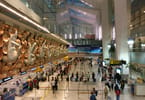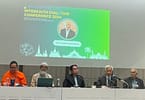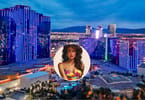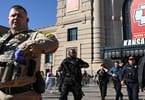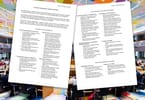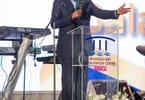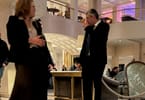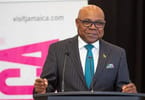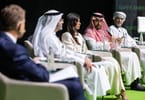From the carved seals of the Dilmun civilization in the third millennium BC to today’s multimedia installations, creative expression has always marked the cultures along the shore of the Arabian Gulf. And now it will be made more visible than before as an opportunity to feast on priceless arts and heritage of the world’s best-known museums, like the Louvre and Guggenheim, is coming to Abu Dhabi. Just a visit next door will suffice.
A Cultural District on the Saadiyat Island – the 27-square kilometer island located 500 meters offshore Abu Dhabi city – is being built into a signature leisure, residential, and cultural destination. Undergoing construction will open in phases, with the $27 billion tourist and cultural development on Saadiyat Island will be fully ready by 2020.
The Cultural District, the cultural component on Saadiyat Island, will comprise the Zayed National Museum, Guggenheim Abu Dhabi, Louvre Abu Dhabi, the Performing Arts center, the Maritime museum, and the Manarat Al Saadiyat.
A team of scribes was taken around an exhibition at the Emirates Palace in Abu dhabi, where models with details of all the cultural centers have been displayed. Hend Al Otaiba, an official at the Tourism Development and Investment Company, said, “In the Muslim world, museums of Islamic art range widely in age, scope, and presentation, but this component will be truly mindboggling.”
The Louvre Abu Dhabi, designed by Jean Nouvel, a French architect known for courageous pursuit, exuberance, and insatiable urge for creative experimentation, will feature major artifacts and works in archaelogy, the fine arts, and decorative arts from all historic periods, besides presenting works from its own permanent collection. The 24,000-square-meter museum will include 6,000 square meters reserved for temporary art exhibitions. Louvre’s finest works of Islamic arts will be particularly strong in ceramics, metalwares, glass, and woodwork.
Construction officially began in May last year on the cultural complex. French President Nicolas Sarkozy and Sheikh Mohammed bin Zayed Al Nahyan, crown prince of Abu Dhabi, presided over the ceremony.
According to Hend Al Otaiba, an official at the Tourism Development and Investment Company, “The museum will open in the last quarter of 2012 or early 2013.”
Another world-famous museum, The Guggenheim, will have its branch at the Cultural District. The Guggenheim Abu Dhabi, which will open in 2013 has been designed by internationally-renowned architect Frank Gehry. The 42,000-square-meter museum housing not only pieces of western art, but works by artists from the Middle East, Asia, Africa, and South America, will be the world’s largest Guggenheim facility and the only one in the Middle East.
“What is unique about the Guggenheim Abu Dhabi is its scale, location, architecture, and the collection that is set to be displayed there when it is completed,” Valerie Hillings, associate curator of Collections and Exhibitions, Abu Dhabi Project, Guggenheim Foundation, said.
The museum will include 12,000 square meters for a permanent collection; special exhibitions galleries; arts and technology center; children’s art education facility; archives; library; a center for contemporary Arab, Islamic, and Middle Eastern culture; and state-of-the-art conservation laboratory.
Inspired by expansive industrial studio spaces, Guggenheim Abu Dhabi design reflects the large scale at which many contemporary artists work and presents new gallery layouts unlike conventional museum spaces. Clusters of galleries in varying heights, shapes, and character allow for curatorial flexibility in organizing exhibitions at dimensions that have not previously existed.
With nearly three million annual visitors worldwide, the Guggenheim and its network of museums is one of the most-visited cultural institutions in the world.
Another interesting component of the Saadiyat Island Cultural district will be the Zayed National Museum as a tribute to the late UAE President, His Highness Sheikh Zayed Bin Sultan Al Nahyan – a man who played a leading role in the formation of the United Arab Emirates’ Federation and who has become affectionately known throughout the UAE as “The Father of The Nation.”
The museum, which will open in 2012/13, spans 12,000 square meters and will feature five galleries – all themed to recognize an individual aspect of Sheikh Zayed’s life’s work – an education center, theatre, shops, and a café with a visitor services area.
The Performing Arts Centre, the fifth element of the Cultural district, will house a music hall, concert hall, opera house, drama theatre, and an academy of performimg arts designed to foster local and international talent. Designed by British-Iraqi architect Zaha Hadid, the center will be 62 meters high.
Zaha Hadid described the design of the Performing Arts Centre as “a sculptural form that emerges from a linear intersection of pedestrian paths within the cultural district, gradually developing into a growing organism that sprouts a network of successive branches. As it winds through the site, the architecture increases in complexity, building up height and depth and achieving multiple summits in the bodies housing the performance spaces, which spring from the structure like fruits on a vine and face westward, toward the water.”
The Maritime Museum will explore and celebrate Abu Dhabi’s rich and dynamic history, culturem and traditions, which were closely linked to its strong relationship with the sea. The themes covered by the museum will include pearling, the marine environment, dhows and dhow building, early navigation, merchant shipping and trade, fishing, and cultural inspirations. Japan’s celebrated architect Tadao Ando’s design, which was inspired by the force and fluidity of the wind and images of sand dunes and boat sails, engages the marine environment with an elegant simplicity. The interior spaces will include an aquarium, a children’s discovery area, the museum’s permanent collection, and temporary exhibitions.



